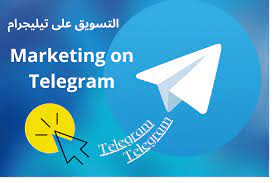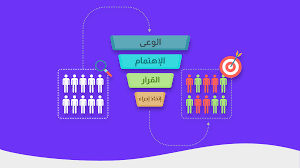Introduction
Do you ever get the sneaking suspicion that there could be a better way to organize your marketing team? There are plenty of reasons you might feel this way, from endless email threads and unmanageable stakeholders to difficulties communicating and delivering campaigns on time.
The answer to all these gripes, as it turns out for many teams, is marketing project management.
In this guide, we’ll talk you through the ins and outs of the marketing project management process, including:
-
What is marketing project management?
-
The phases of the marketing project management process
-
How project management helps teams to communicate
-
How to instill project management skills and responsibilities into a marketing team
-
The benefits of a project-managed approach to marketing
-
Project management tools and platforms
Our aim is to give you all the information you need to make project management part of your everyday marketing processes.
Content table
-
How do I organize a marketing project?
-
What is marketing project management?
-
The four phases of the marketing project management process
-
How project management helps marketing teams to communicate
-
What are the key project management skills for marketing teams?
-
So what does this look like in a successful use case?
-
The benefits of marketing and project management
-
Marketing project management tools
How do I organize a marketing project?
Planning and organizing a marketing project is similar to other projects. It involves researching, setting goals, and coming up with a marketing strategy. The difference is that your projects are specific to marketing, so research may look like:
- Studying industry trends
- Defining your target audience
- Creating or updating buyer personas if needed
All projects tend to have a lot of moving parts, but marketing projects are especially complex. This is because marketing projects require collaboration from a wide range of professionals, such as:
- SEO professionals
- Subject matter experts
- Writers and editors
- Graphic designers
- Event planners, developers, and more
Most marketing projects require a greater range of cross-team collaboration. It’s common for these projects to consist of remote and in-house teams, which can make marketing project management even more challenging if you’re not used to working with distributed teams.
So what does this look like in a successful use case? Let’s look at that next.
What is marketing project management?
Marketing project management is a way of working that provides a framework for delivering marketing projects. It can help teams complete all sorts of work on time and on budget, from marketing campaigns and product launches to SEO audits and competitor analysis.
Key benefits of marketing project management include easier collaboration, better coordination among team members, and more efficient delivery of project work. To put it simply, it’ll give the team more reasons to love working together, and fewer reasons to curse at their computer. The fine detail of marketing project management varies depending on the project management tools, methodology, and specific practices each team chooses to use. (This can be a very good thing if you have team members who are particular about their particulars.)
With that said, the following points are true of most marketing project management processes:
-
The project is focused on producing specific outputs, called deliverables. A deliverable could be anything from a series of blog articles to a new marketing strategy for a brand.
-
Project work is divided into manageable chunks. This includes task lists, tasks, sub-tasks, and milestones representing major achievements on the way to project completion.
-
The work is managed within a project management tool. A project management tool is a digital workspace used to plan and track project tasks and facilitate collaboration among the team.
-
Each project progresses through well-defined phases, including planning and execution. There is usually a pre-defined timeframe and budget for the project.
Project management can be used to manage all sorts of marketing activities and campaigns, including:
-
Pay-per-click (PPC)
-
Email marketing
-
Search engine optimization (SEO)
-
Conversion rate optimization (CRO)
-
Content marketing
-
Product launches
A project management framework brings together all the people and tasks that are needed to deliver a campaign or piece of work. For example, in a brand campaign, project management might be used to organize a team effort between graphic designers, copywriters, market researchers, and strategists.

The four phases of the marketing project management process
Most marketing projects can be managed in a four-phase project lifecycle:
-
Start
-
Plan
-
Execute
-
End/Evaluate
Phase #1: Start
At the start of a project, the commissioning stakeholder (i.e. client) and key project stakeholders from the marketing team will define and agree on the objectives of the project.
The objectives can then be translated into project goals, forming the basis of a project charter. The project starts when this document has been signed by all the leading stakeholders.
Phase #2: Plan
With the project goals established, the team can agree on a project budget and identify the deliverables.
A deliverable is anything the project works towards and produces intentionally. The most common (and obvious) deliverables used in marketing projects are marketing activities and campaigns. Some projects include secondary deliverables, such as generating project data that will help with future projects.
After defining the project’s deliverables, the team formulates a marketing project plan made up of several tasks. The more complex the project is, the more tasks it will need. Each task is allocated to a team member. Sometimes, leading stakeholders assign tasks to team members; in other cases, team members self-assign their own tasks.
It’s important, at this point, to estimate the project scope, meaning the extent of work involved in the project. This will help the team avoid planning more work than it is able to do. Careful project scope estimation is especially important for teams working on a retainer or with a strict budget.
Another requirement during planning is to create a project timeline, which describes the chronology of activities that make up the project. This can be represented visually through graphics such as Gantt Charts, which can be updated in real-time to give the team a clear indication of project progress.
Phase #3: Execute
This is the phase where the team gets on with implementing the project plan.
During execution, those who are leading on project management will be responsible for the team's task management. This involves tracking and reporting on task progress, creating new tasks as needed, and removing ‘blockers’, which are issues preventing tasks from getting done.
An easy way to track progress on certain marketing projects is using kanban boards, which give an at-a-glance visual reputation of how a task is progressing through a project. The kanban board has multiple columns, each of which you can label as a certain stage in a process (e.g. Ideas, Researching, Writing, Editing, Published). When a task progresses to the next stage in the process, its card can be moved to the appropriate column. For more guidance on this approach.
The team member(s) responsible for project management will also need to monitor project status during execution. If the project is running behind time or over budget, this person needs to find out why and seek a solution. They should also provide status updates, in reports to senior stakeholders, and in discussions with the whole team at regular progress meetings.
Phase #4: End/Evaluate
Finally, we reach project completion. What happens in this phase will depend on the nature of the marketing team’s relationship to the project. If the project is a one-off marketing campaign, then it could be considered finished once it has been delivered to the commissioning stakeholder.
On the other hand, if your team is a marketing department, or a marketing agency working for clients on a retainer basis, the final phase of the project lifecycle will likely involve an evaluation process. This is especially important to the continuous improvement of campaign tactics, as insights from the evaluation can be fed into future projects.
How project management helps marketing teams to communicate
Throughout the entire four-phase project lifecycle, the project team should be using their project management tool to communicate.

Perhaps most importantly, team members can comment on the tasks they are collaborating on. They can tag other team members in the comments to bring them into the conversation. And crucially, all the comments in the thread remain attached to the task throughout the project (unless deleted), which means the conversations around tasks are accessible.
Some project management tools provide additional ways for team members to communicate, such as integrated chat messaging.
Whatever the specifics of a project management tool’s communication features, the crucial point is that they facilitate all the team’s collaboration on the project within a single platform. Whereas emails, phone calls, and Zoom catch-ups can lead to important information getting misplaced, a project management tool keeps everything in order and in one place.
What are the key project management skills for marketing teams?
To implement project management effectively, you’ll need to do two things:
-
In-still project management skills into the team
-
Accommodate project management responsibilities within the team
Most marketing teams will be best served by sharing project management responsibilities among themselves, rather than employing a project manager. This approach is much more cost-effective and provides an opportunity for everyone on the team to up-skill.
If you do take project management “in-team”, be sure to use an accessible project management tool and process. This will ensure team members can gain the necessary skills quickly, and without requiring a degree in rocket science.
An effective way to divide project management responsibilities among a team is to have leadership on project management rotate through the team members. One team member leads on one project, another team member leads on the next, and so on. This gives everyone on the team opportunities to learn the project management process inside-out when their turn comes around.
Not only will rotating project management leadership help each team member gain the skills of project management leadership; it should also improve their adoption of the process when they are acting as normal team members.
The project management competency of a team can also be improved through training. Here are some of the key skill areas to focus on in professional development:
-
Organizational skills. While your project management platform should expedite or automate many of the tasks of organizing your projects, project management still requires good organization.
-
Communication skills. People are the most important factor in project management – so it naturally follows that project management leadership requires great communication.
-
Knowledge of project management practices. Understanding the various existing project management practices and methodologies will help a team to make informed decisions about its own project management process.
The benefits of marketing and project management
The most obvious benefits of marketing and project management are productivity-related. Many teams find that a project-managed approach helps them:
-
Plan better
-
Execute work faster
-
Keep track of the moving parts of a project
-
Collaborate more easily
Project management can also create long-term efficiency gains for marketing teams. For instance, each project brings with it a project structure that can be tweaked and repurposed for future projects. Further, you can use lessons learned from the evaluation phase of a project to refine your process and decision-making.
The longer a marketing team uses a project-managed approach, the cleverer its processes can become, and the better its outcomes can be.
Marketing project management tools
The prospect of adding more digital tools to the stack is enough to send a cold shiver down a marketer’s spine. But to facilitate project management, you’ll need the right project management tool.

We recommend using just one tool, which can manage all the moving parts of your campaigns and any other work you do. This is how many of the best marketing teams today are organizing their work, from Wales’ leading digital agency, Liberty Marketing, to the marketing team at famed musical supplies maker D’Addario.
When setting up your project management tool, keep your marketing stack in mind. Specifically, consider how well your other marketing tools can integrate with your project management tool. Integrations between marketing tools and project management tools can increase efficiency and help optimize your processes on both the marketing side and the project management side.
In some cases, integrating a marketing tool with a project management tool is a major project in its own right. You might be better off using a project management platform that comes with in-built capability for a wide range of integrations
































